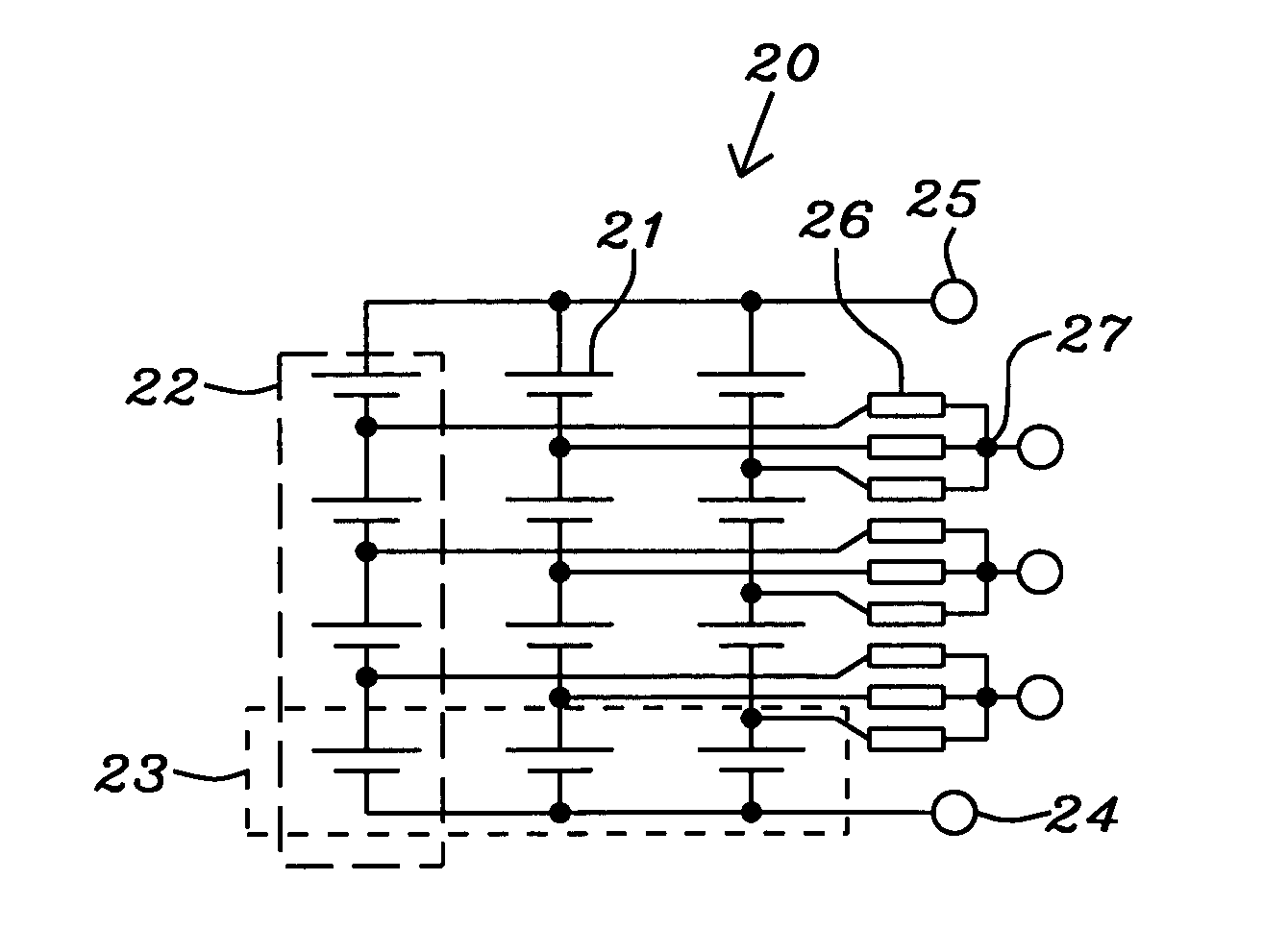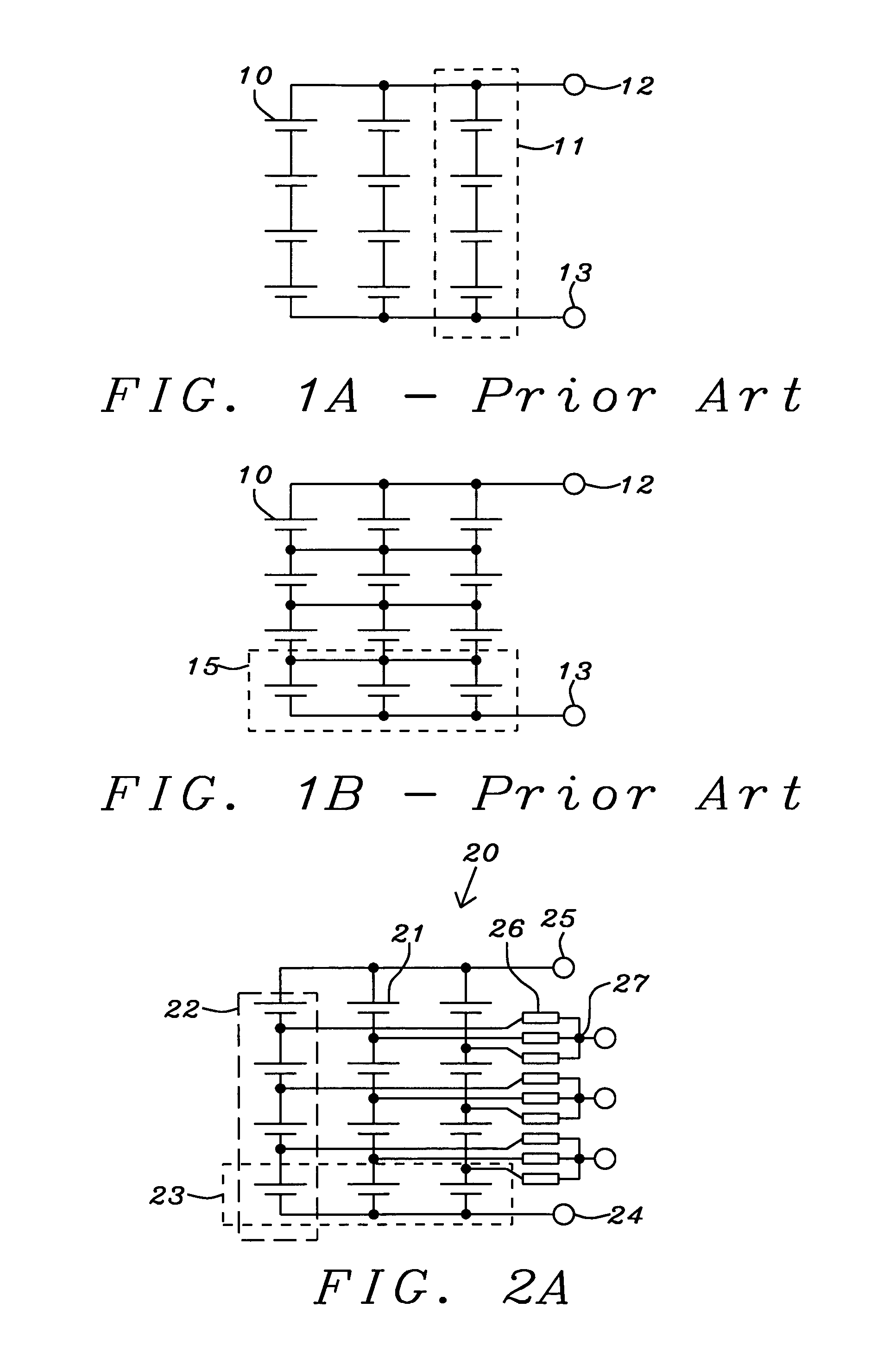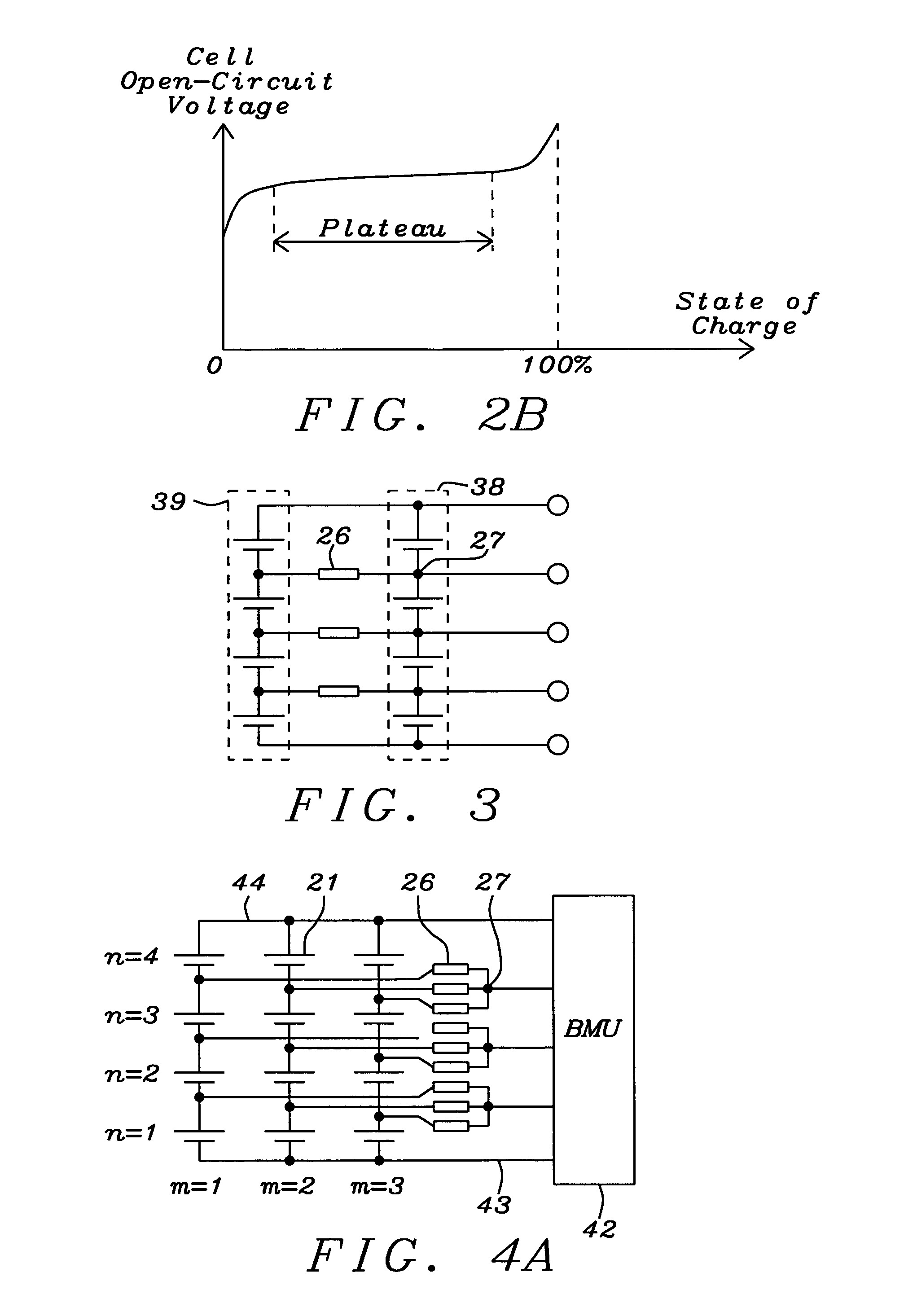Management scheme for multiple battery cells
a management scheme and battery cell technology, applied in the field of batteries, can solve the problems of lithium-ion batteries that pose greater safety hazards, cannot simplify and neither configuration is able to achieve the effect of simplifying both current and voltage control
- Summary
- Abstract
- Description
- Claims
- Application Information
AI Technical Summary
Benefits of technology
Problems solved by technology
Method used
Image
Examples
first embodiment
[0032]Shown in FIG. 2A is the present invention, which represents a symmetrical hard-series, soft-parallel arrangement 20 of batteries, or battery cells 21. The batteries 21 are connected in a column of series connected batteries 22 between the minus 24 and positive 25 terminals of the battery system, and then a number of these columns of series connected batteries are connected in parallel forming rows 23 of batteries across the columns. It should be noted that although FIG. 2 shows three columns 22 of four serial connected batteries 21, a more general configuration is m columns of n serial connected batteries that is within the scope of the present invention.
[0033]Connected to each positive terminal of each battery 21 is a resistor 26, except at the positive end of each series, which connects to the positive terminal 25 of the battery system. The resistors 26 of each row of batteries 23 are further connected to a measurement node 27. In FIG. 2 where n=4 there are n−1=3 measurement...
second embodiment
[0043]In FIG. 4B is shown an example of the present invention coupled to a BMU, where the second column (m=2) is shown to be the primarily series. However the physical location of primary series is arbitrary. In both FIG. 4A and FIG. 4B, a hard-series, soft-parallel arrangement of batteries 21, or battery cells, is shown with n=4 batteries hard-connected in series, and m=3 columns soft-connected in parallel.
[0044]BMU pins and connections unaffected by this invention, for example connection to the temperature sensor(s), to the current sensor, and to the charge / discharge switches, are omitted for clarity. It should be noted that the BMU connection in both FIG. 4A and FIG. 4B are identical to that of a conventional parallel-series configuration. In the first embodiment, the voltage monitor and balancing algorithm, including parameter setting, can be identical to that of a conventional parallel-series configuration. In the second embodiment, the voltage balancing algorithm and parameter...
PUM
| Property | Measurement | Unit |
|---|---|---|
| internal resistance | aaaaa | aaaaa |
| internal resistance | aaaaa | aaaaa |
| resistance | aaaaa | aaaaa |
Abstract
Description
Claims
Application Information
 Login to View More
Login to View More - R&D
- Intellectual Property
- Life Sciences
- Materials
- Tech Scout
- Unparalleled Data Quality
- Higher Quality Content
- 60% Fewer Hallucinations
Browse by: Latest US Patents, China's latest patents, Technical Efficacy Thesaurus, Application Domain, Technology Topic, Popular Technical Reports.
© 2025 PatSnap. All rights reserved.Legal|Privacy policy|Modern Slavery Act Transparency Statement|Sitemap|About US| Contact US: help@patsnap.com



